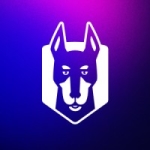Mainly our developers use this solution, and the executive management. They love seeing all the reports and dashboards. There are two things: your current features, how many people are using them, and that also gives us the sense of what people really want.
It’s like a marketing opportunity also. It gives something more which adds value. From a developer’s standpoint, we can practically put customer attributes for every transaction. We just keep pushing data, different customer attributes, into New Relic, and we can understand quickly what happened in a time frame, plus all of the dashboard views, drill-down reports – you can have multiple reports. The good part is that we don’t have to implement anything on our side – we just use the features.
Every action we have certain attributes that we keep pushing data and we don’t have to worry about it. It captures everything, which we can send to executive management. We can put a feature out and see how people respond to it, and that can go into a release which will help make money for the company and add value for the customer.
Probably make the query language a little bit easier. Improved documentation. The reasons we had to call them (they were super helpful) is because we couldn’t find the documentation. It would really help if they were to come up with some online help where you just type something in and get the answers.
In the last year, I’ve never seen Insights go down. In the first couple of months we had a little bit of trouble understanding it, but that’s OK. The query language is a little bit different. It never breaks.
I’ve spoken to them about 20 times after we started using Insights, and they were just brilliant. No doubt about it. Even the account manager could help direct resources to us to help solve issues. All we do is call the account manager and he would get us the correct person; we like to send all of the questions in an email in advance and we’d make arrangements to go through the issues or questions immediately in a meeting.
I was the one who recommended Insights. We implemented a trial for 60 days and we ended up saying yes. We love it. We do a lot of dashboard stuff. Especially the executive management, they just want to see what happened in a given week or time. What did the vendors do? What did the customers do? Who’s working on what?
It was pretty straightforward. We just put the DLLs into the solutions, make a couple of config changes for New Relic so it detects the name of the product or web app or whatever it’s trying to monitor, and just keep pushing customer attributes or whatever you want. It was very simple. Within 30 minutes you see customer attributes in the environment and it starts capturing.
I think we also looked at one or two. The first one we tried was New Relic. The reputation of the vendor – we decided to give New Relic a try after hearing about how it was used to fix the Affordable Care Act implementation. That’s how we heard about New Relic. We needed to set up monitoring and alert – when we saw New Relic we liked it and its ease of setup. We gave it a 30-day trial and after that there was no looking back.
I really love it. I’m not a developer, but I can just walk up to a developer and ask them to push some data so I can see what’s going on. It’s very easy. The whole ease part; once the code is pushed I just wait to see what events occurred.
If they don’t want to build something on their own (and it all depends on company size resources, etc.) an APM solution is the right answer. Given we have only one infrastructure guy and he can manage all of this, and a small team, everyone can use it all for different purposes. Stress testing, load testing, and evaluating performance. Each team has different ideas about how to use the reports, so it’s good for everybody. Different skill set people can use the entire NR suite for different reasons. It’s the whole package.

















